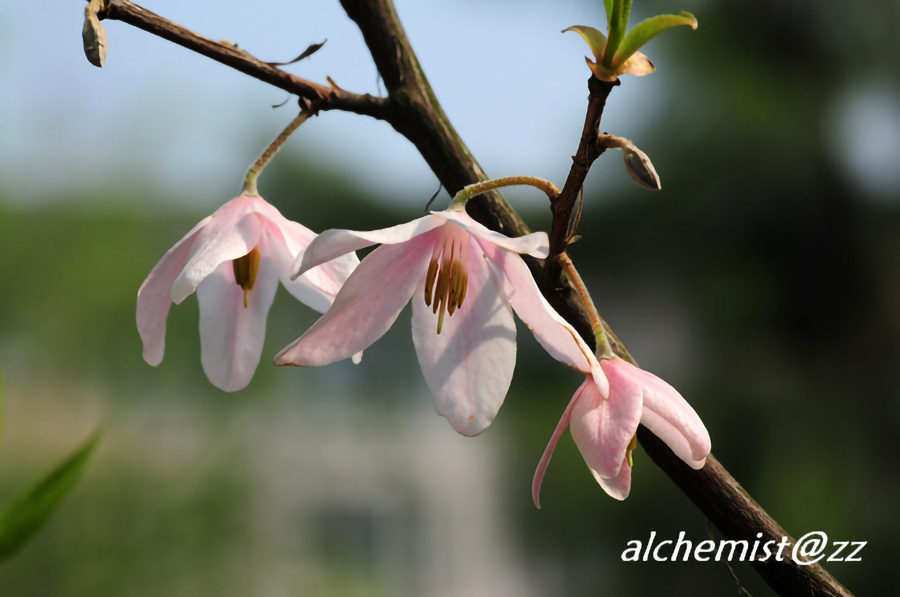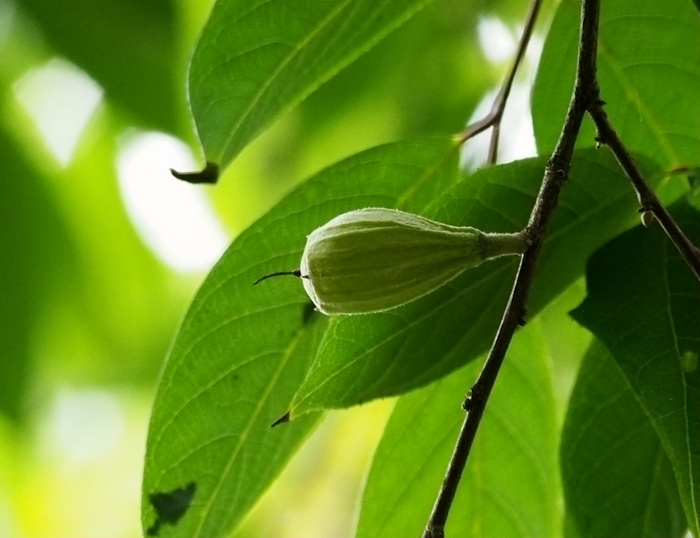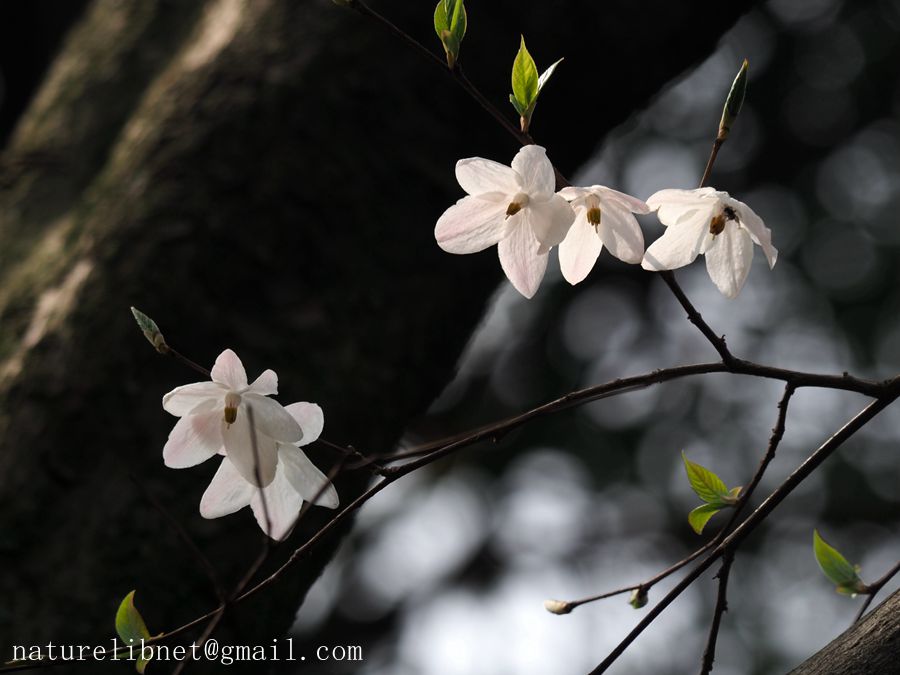陀螺果 Melliodendron xylocarpum
- Scientific Name: Melliodendron xylocarpum Hand.-Mazz.
- Ref: Anz. Akad. Wiss. Wien, Math.-Naturwiss. Kl. 59:109. 1922
- Synonyms: Melliodendron jifungense Hu; M. wangianum Hu
- English Common Name: Chinese parasol
- Chinese Common Name: 陀螺果 tuóluó∙guǒ, 鸦头梨 yātóu∙lí
- Family: Styracaceae
- Genus: Melliodendron
- Distribution: Forest ravines; 600–1500 m. Fukien, N Guangdong, NW Guangxi, Guizhou, Hunan, Jiangxi, S Sichuan, SE Yunnan.
- Type:
Prov. Kwangtung septentr.: In silvis montium Lungtou-schan 60 km ad orientem urbis Siudsao (»Schautschou«), s. granitico,250—900 m, leg. 5. IV. et fructus delapsos cur. 20. X. 1917,R. Mell (Plt. Mellianae Sin., Nr. 37).
Prov. Hunan austro-occ.:In silva elata frondosa umbrosa montis Yün-schan prope urbem Wukang, s. schisto argilloso, 1000 m, fr. delapsos legi 12. VII. 1918,(It. Sin., Nr. 12282).
Trees 6--20 m tall. Trunk to 20 cm d.b.h., bark gray-brown often irregularly exfoliating. Winter buds ovate, ca. 1 cm. Petiole 3--10 mm; leaf blade ovate-lanceolate to oblong-elliptic, 9.5--21 X 3--8 cm, papery, densely stellate pubescent when young, glabrescent except on veins, base cuneate, apex shortly acuminate to acute, secondary veins 7--9 pairs, tertiary veins reticulate and abaxially raised. Flowers subsessile to pedicel ca. 1.5 cm. Calyx 3--4 mm, teeth ca. 2 mm. Corolla lobes oblong, 2--3 X 0.8--1.5 cm. Style ca. 1.3 cm. Fruit variable in form and size, usually obovoid, obconical, or obovoid-pyriform, (2--)4--7 X 1.5--3(--4) cm, 5--10-ribbed, densely gray stellate tomentose, apex rounded, acute, or shortly rostrate. Fl. Apr-May, fr. Jul-Oct. (Flora of China)


07/02/2017, Hangzhou Botanical Garden
